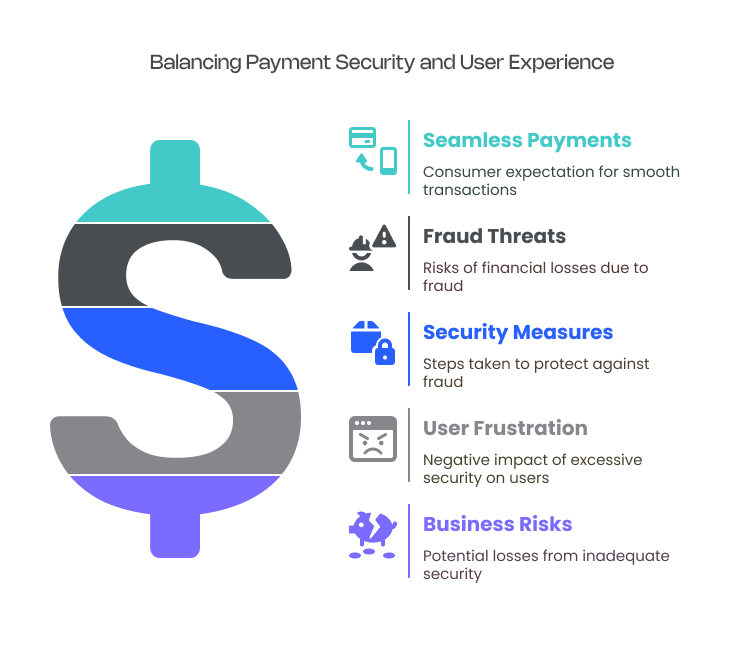Fraud Prevention vs. Frictionless Payments: How to Balance Security & User Experience
In today’s fast-moving digital economy, businesses must walk a fine line between security and convenience. While strong fraud prevention measures are essential to protect transactions, overly strict security protocols can frustrate customers and lead to abandoned transactions. Striking the right balance between fraud prevention and a frictionless payment experience is key to maximizing conversions and maintaining trust. Here’s how businesses can achieve this balance.
Understanding the Trade-off
Consumers expect seamless payments, whether they’re shopping online, subscribing to services, or making in-app purchases. However, businesses must also combat the growing threat of fraud, which costs the global economy billions each year. Excessive security measures, such as multi-step verifications, transaction delays, and frequent declines, can frustrate users and result in lost revenue. On the other hand, insufficient security can expose businesses to fraud, chargebacks, and reputational damage.
Strategies for Balancing Security and User Experience
1. Implement Adaptive Fraud Prevention
Instead of applying rigid security measures to every transaction, businesses should adopt adaptive fraud prevention powered by AI and machine learning. These systems analyze transaction patterns in real-time and adjust security protocols accordingly. Low-risk transactions can be processed instantly, while high-risk ones trigger additional verification steps.
2. Leverage Tokenization & Encryption
Security measures like tokenization and encryption allow businesses to protect sensitive payment data without introducing unnecessary friction. Tokenization replaces card details with a unique token, ensuring that hackers cannot access actual payment credentials even if a breach occurs.
3. Utilize 3D Secure 2.0 (3DS2) Intelligently
3DS2 enhances authentication by using risk-based analysis to determine whether additional customer verification is needed. Unlike its predecessor, 3DS2 improves the customer experience by reducing unnecessary authentication requests while still offering strong security for high-risk transactions.
4. Enable Biometric Authentication
Biometric verification, such as fingerprint and facial recognition, provides an extra layer of security without requiring users to remember complex passwords. By integrating biometric authentication into the payment process, businesses can improve both security and convenience.
5. Optimize Approval Rates with Smart Routing
Declined transactions due to fraud concerns can frustrate legitimate customers. Smart routing technology optimizes approval rates by directing transactions through the most efficient and reliable payment channels, reducing false declines without compromising security.
6. Educate Customers About Secure Payments
Customers play a role in securing their own transactions. Educating them about secure payment methods, phishing scams, and how to recognize suspicious activity can help prevent fraud while ensuring they feel confident using your platform.
The slikair Advantage
At slikair, we believe security and seamless transactions go hand in hand. Our intelligent fraud prevention tools, machine-learning risk assessments, and smart transaction routing help businesses detect and prevent fraud while optimizing approval rates. By leveraging adaptive authentication, tokenization, and alternative payment methods, slikair ensures that payments remain secure without creating unnecessary friction for users.
Final Thoughts
Businesses that strike the right balance between fraud prevention and user experience will gain a competitive edge. By using advanced fraud detection techniques, optimizing transaction approval rates, and implementing secure yet convenient authentication methods, companies can protect revenue while delivering the seamless payment experience that customers expect.
Ready to optimize your payment security without sacrificing conversions? Connect with slikair today to learn how our payment orchestration platform can help you achieve both.




